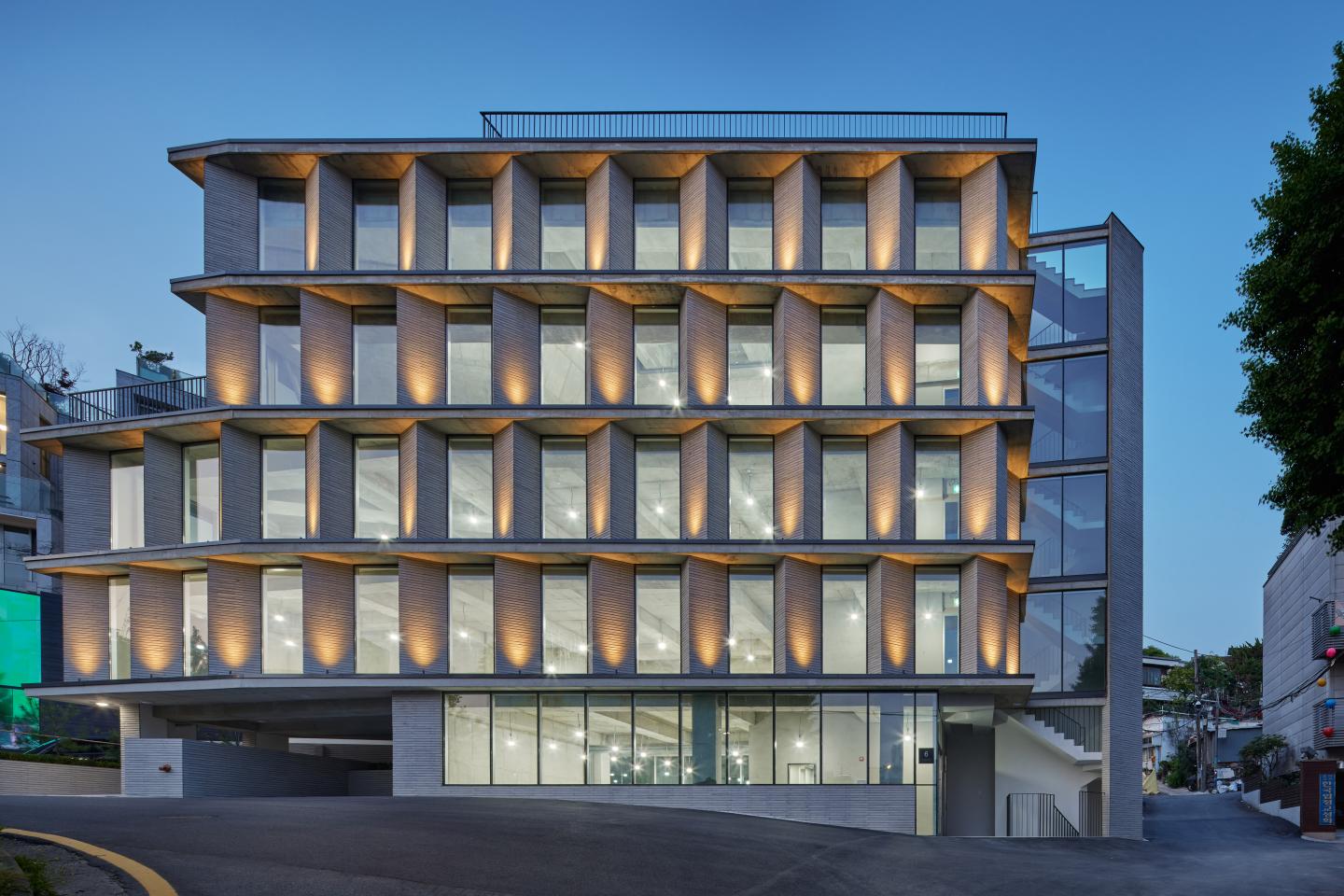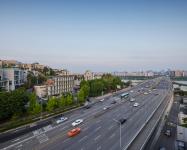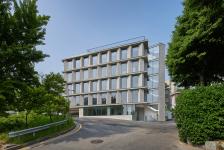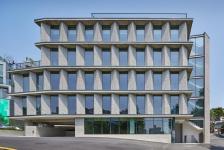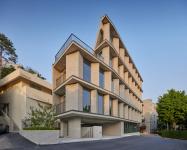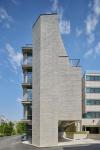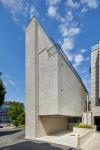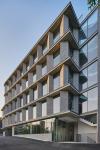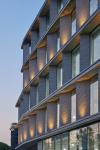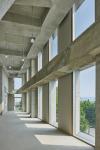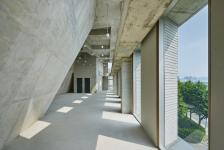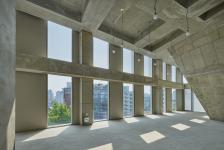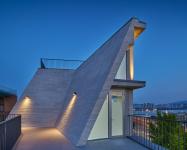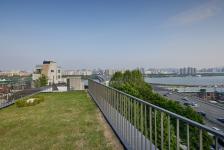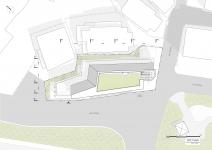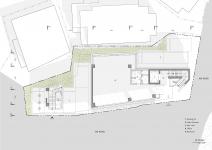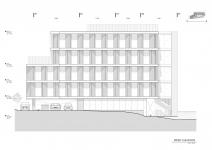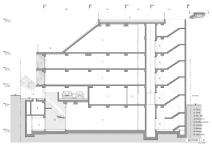Nestled at the northern entrance of Hannam Bridge in Seoul, Korea, this small mixed-use building stands as a beacon of innovative design and environmental harmony. Strategically positioned to capitalize on its prime location, the building offers unobstructed views of the Han River to the south and the scenic Namsan Mountain to the north. The design not only meets but exceeds the rigorous standards of local building codes, reflecting a thoughtful approach to urban architecture.
In response to site constraints that required a long and narrow structure, a unique design element reminiscent of the concept of “me & variation” in music was introduced. This involved the regular insertion of triangular solid masses that mirrored each other across the floors, strategically placed to provide visual interest on each horizontally segmented floor. This repetitive pattern was carefully proportioned, and the triangular shape and mirrored arrangement produced various reflective effects, particularly in the central area where solid and void patterns interacted. This added multiple layers of depth to the building’s appearance, especially notable through landscape lighting at night. Even when viewed from different angles, the building showcased a distinctive façade, akin to the lively and bright notes of staccato music. This design choice made the building stand out prominently, even amidst fast-moving traffic, leaving a lasting impression on observers.
The building is distinguished by its unique crescent-shaped linear structure, a departure from conventional design approaches. This distinctive form allows for horizontal layering that maximizes the visual connection with the surrounding landscape. Instead of opting for a traditional fully glazed façade, the design employs a sophisticated blend of solid and transparent modular patterns. The façade features a series of triangular solid elements, meticulously oriented to create a visually dynamic and cohesive pattern. This innovative arrangement introduces a sense of depth and complexity, enhancing the building’s aesthetic appeal and ensuring it captures attention in the bustling urban environment.
In addition to its striking exterior, the building incorporates thoughtful green spaces to foster a stronger connection between its occupants and nature. A rooftop garden offers a serene retreat with panoramic views, serving as a peaceful oasis amidst the urban landscape. Below, an underground sunken garden provides a unique, sheltered environment for relaxation and contemplation. These green spaces are not merely aesthetic additions but integral components of the building’s design, contributing to improved natural light and ventilation throughout the structure.
The integration of these natural elements with the building's architectural features creates a harmonious and tranquil environment. The careful consideration of light, space, and natural surroundings ensures that the building is not only visually striking but also promotes well-being and comfort for its occupants. Furthermore, the building’s design reflects a commitment to sustainability and environmental sensitivity. By incorporating green spaces and innovative façade patterns, the architecture reduces the urban heat island effect and enhances the building’s overall energy efficiency. The dynamic interplay of solid and transparent elements also contributes to the building's environmental performance, reducing glare and optimizing daylighting.
2020
2023
Site Area: 403.00 m²
Building Area: 218 m²
Structural Engineering: Jeon and Partners
Interior Designers: Donghoon DOS
Mep Consultants: Sunwoo Engineering
Civil Consultants: Tae Am Engineering
General Contractors: 3-square construction Inc.
Client: Donghoon Co., Ltd.
Lead Architect: Taesun Hong, FAIA
Design Team: Daejung Sang, Yongho Hwang, Sangmin Yang, Jihoon Lee, Kyungwook Kim, Byeongsu Kim
